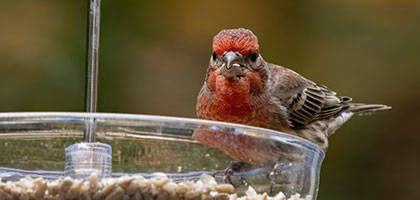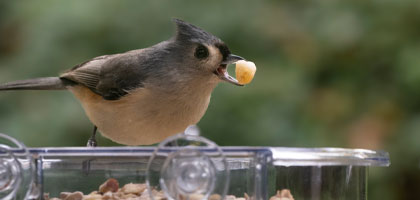Bird feeding is a popular pastime for many. It's a simple way to connect with nature and observe wildlife up close.
But what about feeding peanuts to birds? Is it a common practice?
This article will explore the topic of feeding peanuts to our feathered friends. We'll delve into the benefits, potential risks, and best practices.
Whether you're a seasoned bird watcher or a curious beginner, this guide will provide valuable insights into the world of peanut bird feeding.
The Popularity of Peanuts for Birds
Peanuts are a popular choice for bird enthusiasts. Their high fat content provides essential energy for birds, especially during winter.
Many bird enthusiasts enjoy watching diverse bird species flock to peanut feeders. Notably, jays and woodpeckers are frequent visitors.
Due to their nutritional value, peanuts are a staple in many backyard bird feeding setups. Their appeal extends beyond their energy benefits, as they attract a variety of birds.
Benefits of Feeding Peanuts to Birds
Peanuts provide birds with vital nutrients. They are rich in essential fats and proteins, supporting birds' overall health.
In times of high energy demand, such as breeding and molting seasons, peanuts can be especially beneficial. Their energy content helps birds thrive during these demanding periods.
Providing peanuts also offers a unique foraging challenge. Birds enjoy cracking open shells, which promotes natural behaviors and mental stimulation.
Key Benefits of Peanuts for Birds:
- Essential fats and proteins
- Energy during breeding and molting
- Foraging enrichment
Choosing the Right Peanuts for Birds
Selecting the right peanuts is crucial for bird safety and health. Unsalted and shelled peanuts are the best choices, as they are free from harmful additives.
Avoid salted and flavored varieties, as they can pose health risks to birds. Whole peanuts may be too large for smaller birds and should be crushed to prevent choking.
Purchasing from reputable suppliers ensures the peanuts are free from aflatoxins. This helps protect the birds from toxins that could be dangerous to them.
Types of Peanut Feeders
Peanut feeders come in various designs, each catering to different bird preferences. Using the right feeder can enhance bird-watching experiences.
Popular Peanut Feeder Styles
- Mesh tubes: These allow birds to easily access peanuts and minimize waste.
- Wreaths: They add an aesthetic touch while providing ample feeding space.
- Platforms: Ideal for larger birds, these feeders offer stability.
Choosing a style depends on the target bird species and yard setup. These feeders attract diverse birds, enriching any backyard birding activity.
How to Safely Offer Peanuts to Birds
To safely feed peanuts to birds, make mindful choices about the peanuts you select. Avoid salted or flavored varieties, which can harm birds.
Proper sizing is crucial, especially for smaller species. Offer crushed or chopped peanuts to minimize choking risks.
Regularly clean the feeder to prevent disease spread. Keeping it tidy ensures a healthy feeding environment.
- Avoiding salted or flavored peanuts
- Proper sizing for small birds
- Regular feeder cleaning
The Joy of Bird Watching with Peanut Feeders
Peanut feeders add a delightful element to birdwatching. Watching birds flock to these feeders is a rewarding experience for any enthusiast.
Peanut feeders attract a variety of species. Jays, woodpeckers, and titmice are just a few that might visit your yard.
Observing birds up close fosters a deeper connection with nature. It’s both relaxing and educational, offering enjoyment for all ages.
Conclusion: Peanuts as a Responsible Bird Feeding Practice
Feeding birds peanuts is both beneficial and enjoyable. It enhances birdwatching while supporting bird nutrition.
However, it’s important to do so responsibly. Choose the right peanuts and use appropriate feeders to ensure the safety and health of our feathered friends. Peanuts can make bird feeding a delightful and sustainable practice.




